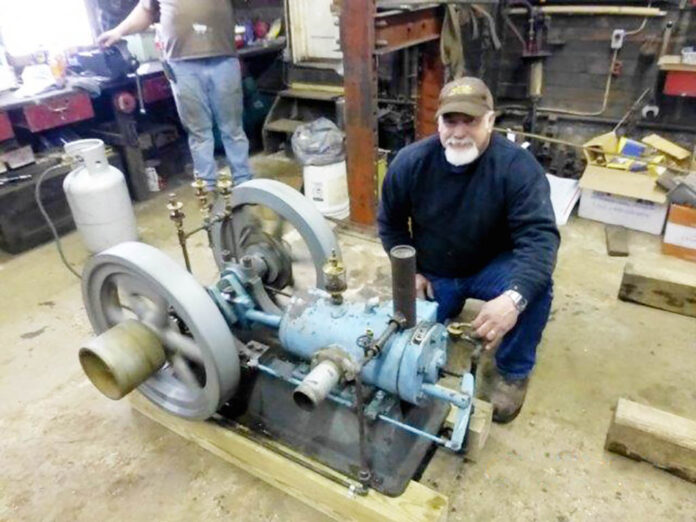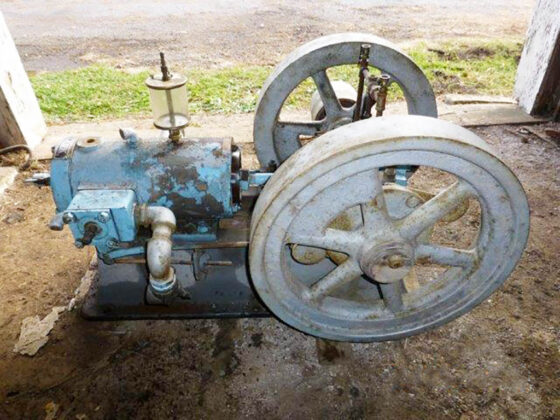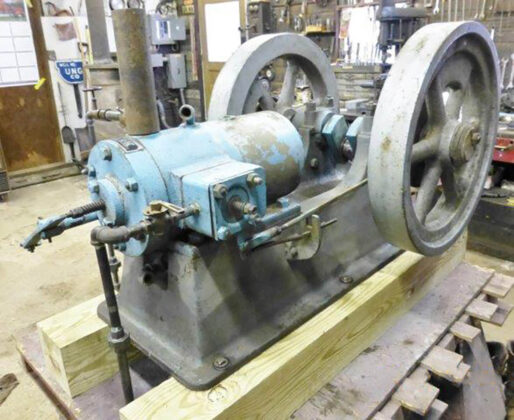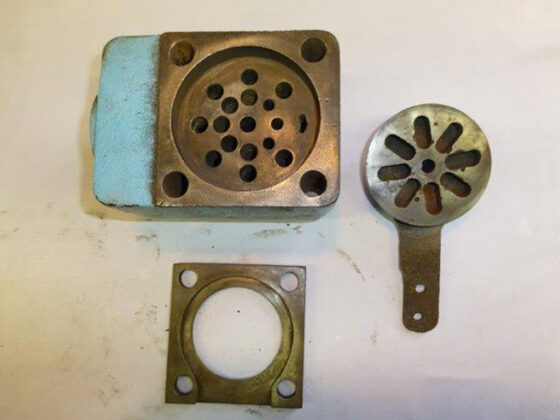
Editor’s Note: This column is being published posthumously on Paul Harvey’s behalf. He died Feb. 19, 2025, at age 80. He submitted it, along with a column for April, at the end of January. True to his form, he humorously wrote the introduction for this column from his small Clark engine’s perspective.
Hello,
My name is Clark, and I’m a small gas engine who lives at Coolspring Power Museum. I am told that I’m very unusual and probably don’t have any brothers or sisters. Following this column closely, I noticed that I’m not given much attention. So I intend to create my own fan club and be well noticed. As being unique among other siblings, it should be a fun trip for all.
Clark’s origins
Let’s travel back in time over 100 years. Clark grew up in the Northeast and had an excellent industrial and academic background.
Do you wonder who designed him?
Two brothers, William Pendleton Clark and Charles Ethan Clark, of Belmont, New York, decided they wished to enter the manufacturing business. They were in a fertile farming valley with huge stands of timber — wow, what an opportunity! Soon, they were a giant among sawmill makers and huge steam engines. They built a huge plant to house the Clark Brothers Company in Belmont in 1878.
Our friend Clark has a rich heritage!
The Clark brothers continued at their big plant in Belmont until a fire claimed it in the early 20th century. At the time, they were even making farm equipment such as hay rakes.
After the fire of 1912, Clark Brothers returned as Dresser-Rand. Today the company survives as Siemens — 100 years later; what a location!
Following the fire, the brothers turned to Wellsville, New York and teamed up with William Henry Norton for gas engine development. Then, the Clarks built a modern factory in Olean, New York that was dedicated to the oil and gas industry. Soon, there were literally hundreds of compressor stations using two-stroke cycle Clark engines.
Clark’s early days
So let’s follow up with our Clark’s early days. Despite his rough beginning, Clark survived.
After he was born in Belmont, Clark was used to power a buzz saw to cut firewood for a maple syrup sugar shack. This was hard work, but he was completely capable. However, it was quite a surprise when he was then scrapped into a roadside ditch. Fortunately, he was discovered by the late Ralph (Sonny) Wilson, of Allegany, New York.
Clark’s savior, Sonny, found him rusting away west of Five Mile Road near Allegany. Following his rescue, Sonny got him running and gave him a new life operating for local displays. Miraculously, Clark’s life continued to be useful.
Wow, Clark has had a great life!
Coming to Coolspring
Now it’s time to scroll ahead 100 years to detail little Clark’s journey to Coolspring Power Museum.
In 1976, Dresser-Rand, Clark Brothers’ successor, adopted Clark for the Olean, New York Bicentennial. For the celebration, he received a quick blue and gray paint job to match the firm’s colors, and a modern Clark nameplate. He still bears those colors!
At the end of the event, Dresser-Rand, who made very large equipment, returned Clark to his owner. Several years later, Sonny donated Clark to Coolspring Power Museum.
Who is Clark?
So just who is Clark and how did he survive so long?
Clark bears no name, other than the 1976 nameplate, nor any casting numbers. Being unlike anything else Clark Brothers ever built made the members of CPM wonder if Clark could have been a prototype and the only one in existence. We will probably never know for sure, but it seems like the parent company entered engine building with this prototype. It was probably built circa 1895. He was four-stoke cycle and used many odd designs — note the odd rotary intake valve and throttle, as well as the friction governor. Clark was unusual but worked very well.
Clark has been a very interesting project. He has had a long and tough life. But he is happy to retire at Coolspring Power Museum, and have his friend Doug Fye give him occasional exercise — it is fun to run again!
I hope our readers have enjoyed this glimpse of Clark’s life.















